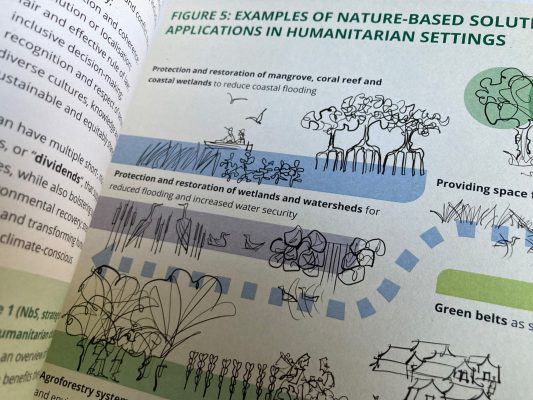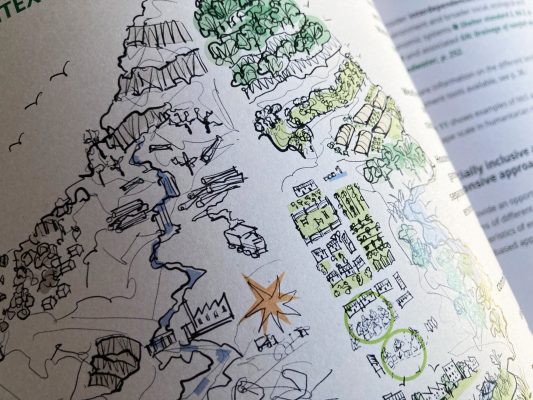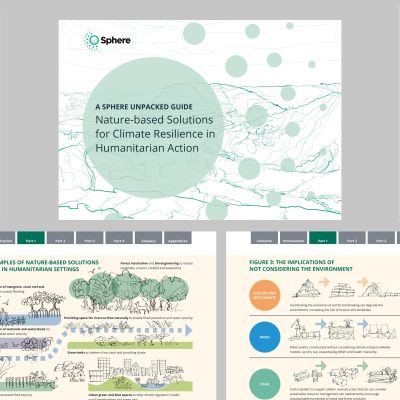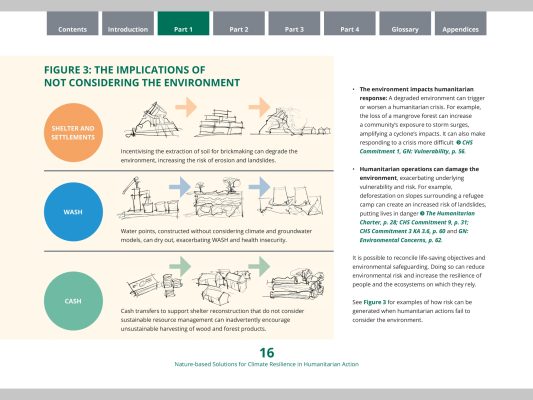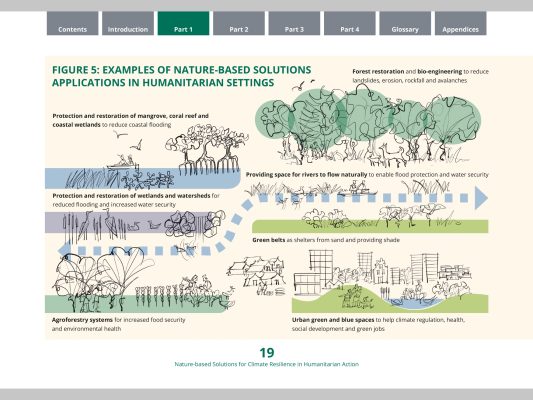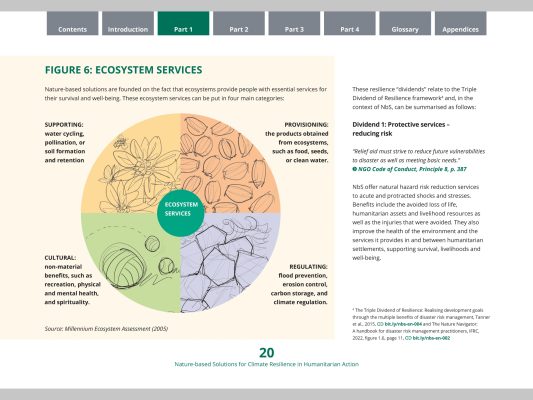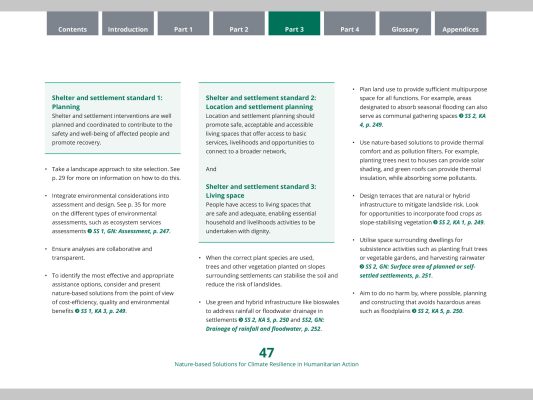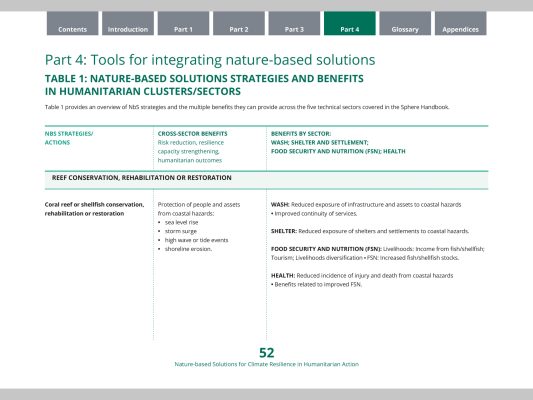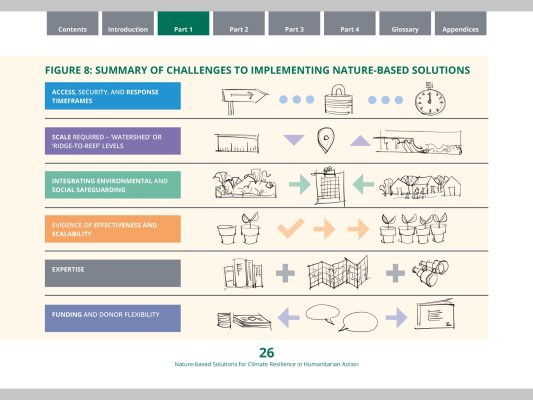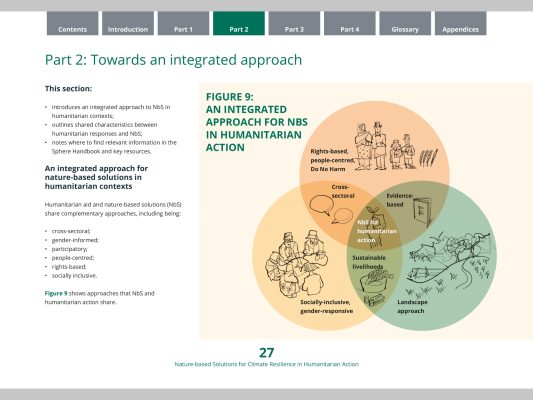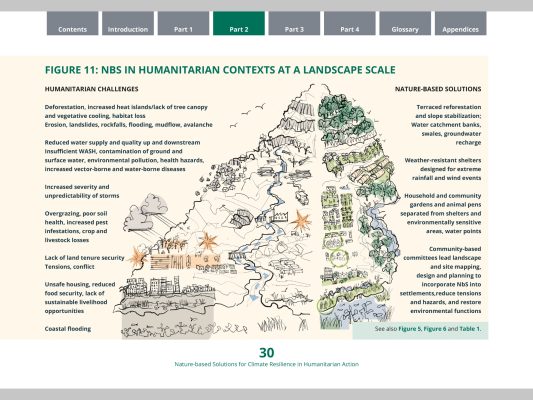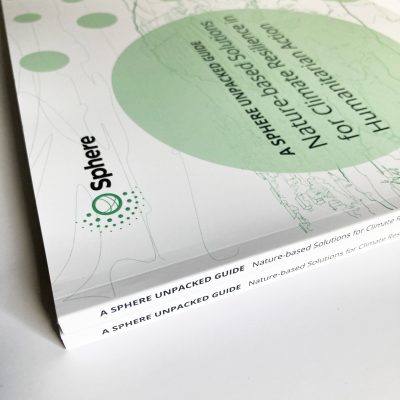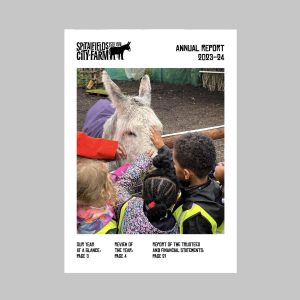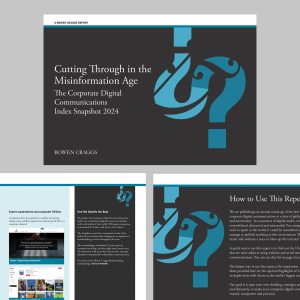Explaining climate resilience in humanitarian action...
92 pages. That’s a lot of explaining. But setting out nature-based ways of building climate resilience in humanitarian action is detailed work.
My design task has been to make the guide navigable and readable; the illustration task, to create sketch graphics showing principles and processes in an approachable way.
This title is one in a series so elements of the design link this guide with its companions. But the format has been turned from portrait to landscape for readability online.
For translation, each page has been designed with spare capacity in mind and the sketch graphics have elements set up on the page.
Together, we’ve looked at how to simplify a highly complex system of links, in a way that works in print as well as on screen.
There has been feedback from accessibility experts and modification for usability.
Working with Sphere and its project partners across four time zones, there has been process design to consider too.
And it’s always a privilege working on projects where I get to learn something. Through working on the landscape sketch graphic for figure 11, I learned about berms and swales, features for water retention.
Download Nature-based Solutions for Climate Resilience in Humanitarian Action here.


